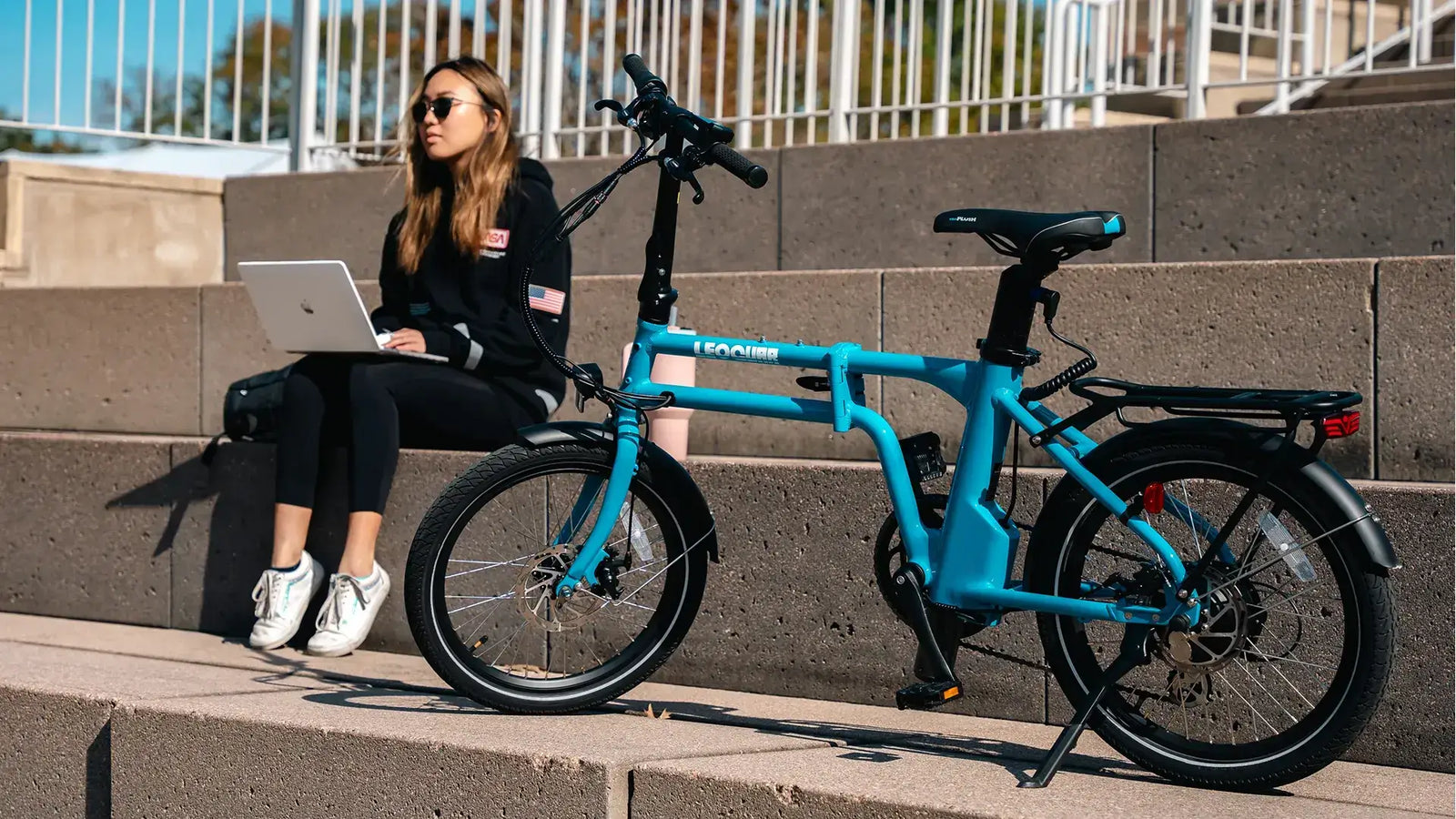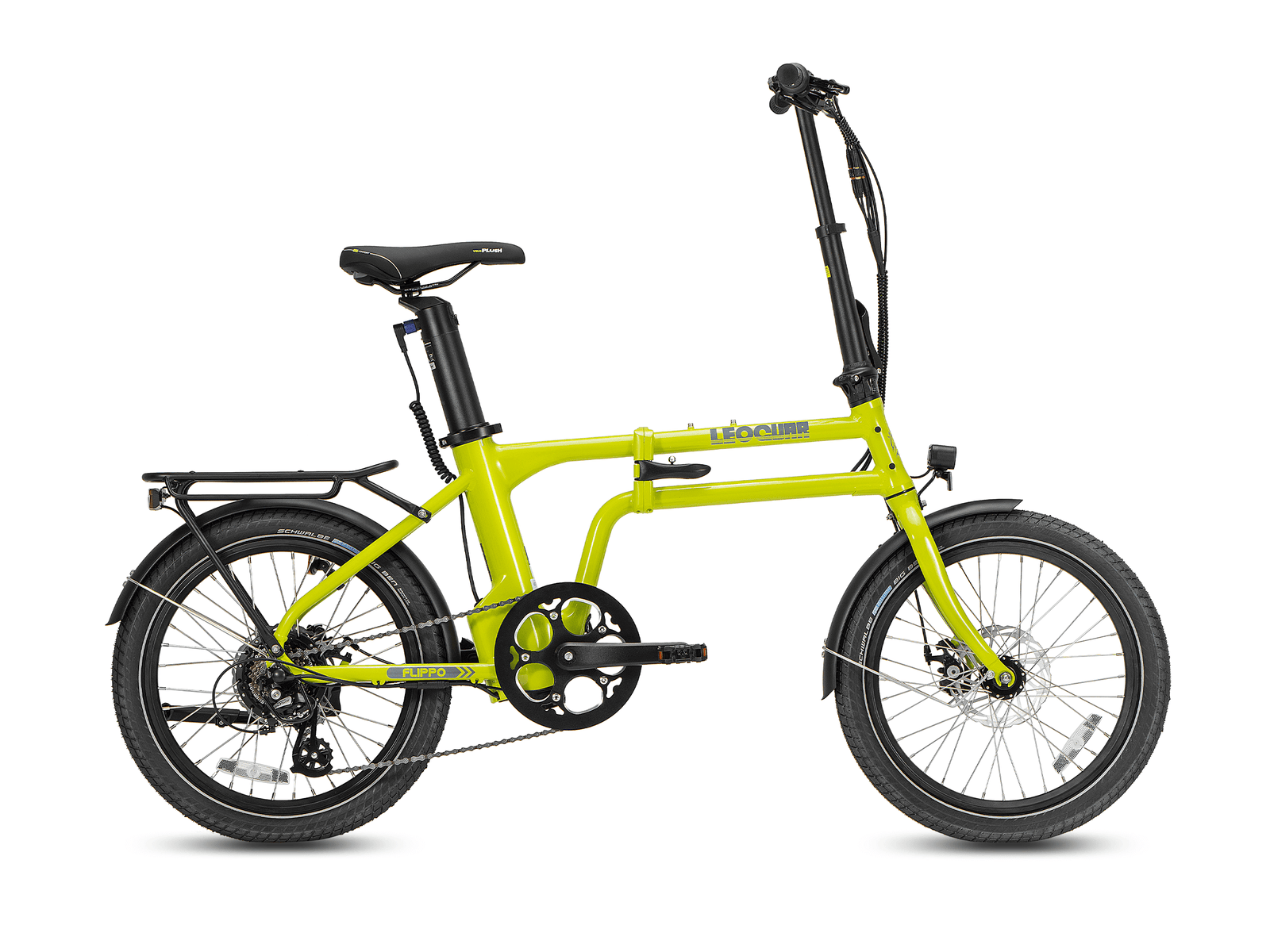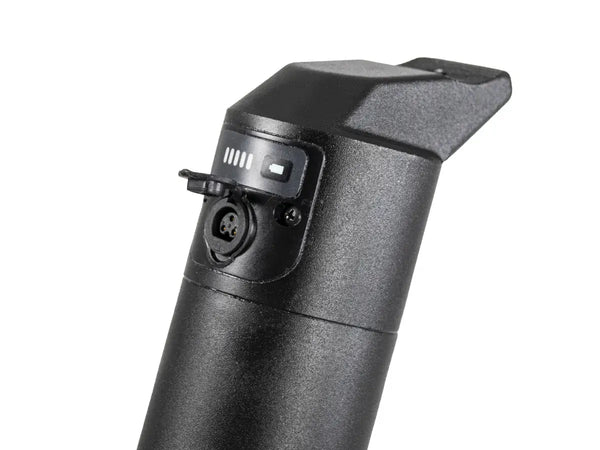
48V Ebike Battery Replacement: What to Check Before You Buy
Before You Buy: 5-Point Checklist
Making an informed decision is the most important part of the e bike battery replacement process. This section helps you avoid common and costly mistakes. We've built a practical framework to help you evaluate any potential replacement battery. It gives you the confidence to buy the right product the first time.
- ✅ Measure Dimensions — Always confirm fit inside folding frame
- ⚡ Match Specs — 48V, Ah, and Wh must align
- 🔒 Check Safety — Look for UL 2271 / 2849 + BMS
- 🏷️ Brand Choice — Compare OEM vs. trusted third-party
- 📞 Warranty & Support — Make sure customer service is responsive
1. Check Physical Compatibility for Folding 48V Ebike Batteries
For batteries that integrate directly into a folding e-bike frame, there is zero room for error. Dimensions are non-negotiable. Before you do anything else, you must measure your existing battery and the frame's internal battery compartment. Use a ruler or tape measure to get the precise length, width, and height. Also, take note of the mounting dimensions—especially the position of screw holes or battery brackets. These affect not only fit but also structural safety during high-speed riding.
Next, examine the connector type and pin configuration. Common connectors include XT60, XT90, or Anderson styles, but many brands use their own designs. It's not just about the shape; the number of pins and their layout must match perfectly. A simple mistake here will make an expensive new battery completely unusable.
From our experience, we always recommend taking clear photos of your current battery's label, its dimensions next to a tape measure, and a close-up of the connector before you even start shopping. This simple step saves hours of frustration. We've personally tested multiple 48v ebike battery models in real-world folding e-bike builds—from city commuters to off-road folders—and found that misaligned connector pins or oversized packs are the #1 reason for failed installs. Small oversights can become costly.
2. Match the “Big Three” Battery Specs (V, Ah, Wh) for 48V Ebikes
After confirming a physical fit, you must match the core electrical specs of your original battery. These are the numbers that ensure your bike runs safely and effectively. As battery specialists working with OEM-grade components like Samsung 21700 cells and Leoguar custom CANBus BMS, we’ve seen firsthand how mismatched specs—especially undervoltage packs—can cause display errors or damage to motor controllers.
Voltage (V): This must be an exact match. If your bike uses a 48V system, your replacement battery must also be 48V. Using a different voltage can permanently destroy your bike's controller, display, or the battery's own Battery Management System (BMS). The reason this is so critical relates to how lithium-ion batteries work; the entire system is designed to operate within a very specific voltage range.
Amp-Hours (Ah): Think of this as the size of your "fuel tank." Some riders opt for a high-capacity 48v battery, such as 17Ah or higher, especially for extended commutes or off-road rides. Just make sure the larger pack matches your space and voltage requirements. A higher Ah rating means a longer range per charge. This is the one spec where you have some flexibility. If a higher-capacity battery (e.g., upgrading from 10Ah to 14Ah) has the exact same physical dimensions and voltage, it's often a great way to improve your bike's performance.
Watt-Hours (Wh): This is the ultimate measure of a battery total energy capacity. It's calculated with a simple formula: Voltage (V) x Amp-Hours (Ah) = Watt-Hours (Wh). A 48V, 10Ah battery has 480Wh of energy, while a 48V, 14Ah battery has 672Wh.
Common 48V Ebike Battery Specs Comparison
| Voltage (V) | Amp-Hours (Ah) | Watt-Hours (Wh) | Est. Range (miles) | Best For |
|---|---|---|---|---|
| 48V | 10Ah | 480Wh | ~20–25 | Light city commutes |
| 48V | 14Ah | 672Wh | ~30–35 | Daily mid-range commuters |
| 48V | 17.5Ah | 840Wh | ~40–45 | Long-distance or hilly rides |
| 48V | 20Ah | 960Wh | ~45–55 | Touring, heavy load, or UGC |
Need help estimating real-world range? Try this quick formula: Estimated Range (in miles) ≈ Watt-Hours ÷ 20
So, a 48V 14Ah battery = 672Wh. Divide by 20, and you get roughly 33–35 miles on moderate pedal assist. Your actual range may vary depending on terrain, weight, and riding mode. Many brands now offer a battery capacity calculator on their product pages. Use them to simulate your exact riding style and see how far a battery can take you.

3. Safety First: BMS, UL Certification & Battery Type Comparison
A lithium-ion battery stores a huge amount of energy in a small package. Safety cannot be an afterthought. We strongly urge you to only purchase batteries that are UL certified. UL Solutions is an independent safety organization that tests products to prevent fires, electrical shock, and other hazards. A battery management system (BMS) is also crucial. It protects your cells from overcharging, overheating, and short circuits, especially in higher-speed bikes that draw more power under load.
For e-bikes, there are two key standards to look for: UL 2271 for the battery pack itself, and UL 2849 for the entire e-bike system. Never buy an uncertified, cheap battery from an unknown seller. The potential cost savings are not worth the risk of a fire. Leoguar is actively engaged in meeting UL 2849 standards across all new battery systems and works with certified testing labs for fire, thermal, and impact compliance. Our engineers review each battery spec for thermal runaway prevention protocols.
While most modern e-bikes use lithium-ion batteries, some older or budget models still rely on lead-acid packs. The difference is night and day. Lithium-ion offers better energy density, faster charging, longer lifespan, and lower weight. From a safety standpoint, lithium-ion packs—especially those with UL or CE certification—are far more stable and reliable under load.
4. OEM vs. Third-Party 48V Ebike Batteries: Which Should You Buy?
When choosing your e bike battery replacement, you'll face a choice between the original manufacturer and a third-party seller. OEM (Original Equipment Manufacturer) is the brand that made your bike, like us, GoTrax, or Rad Power Bikes. Buying an OEM battery is the safest bet for guaranteed compatibility and communication between the battery and your bike's controller.
Reputable third-party sellers can offer excellent value, sometimes providing higher capacity for a lower price. Look for brands like Unit Pack Power (UPP) or EM3ev that have a long track record, thousands of positive reviews, and clear warranty information. The third-party market is growing, but so are the risks. One common debate is branded vs generic ebike battery. While branded packs offer better QC and service, some generic options can be compelling—just be sure to verify safety credentials and user feedback.
5. Check Warranty, Reviews & Battery Disposal Safety
A quality battery is a significant investment, and it should be protected. A reliable manufacturer or seller will stand behind their product with at least a 1-year warranty. Don’t overlook battery disposal safety either. Some sellers provide safe recycling options or guidance, which is especially important when replacing high-energy lithium packs. Before purchasing, check the seller's return policy and warranty terms.
Read customer reviews that specifically mention their experience with customer support. This is your safety net. If you receive a defective unit or encounter a problem down the line, responsive support is invaluable. We also encourage buyers to check for transparent product specs, verified reviews, and battery serial tracking before purchase. Trustworthy sellers will never hide battery chemistry, BMS details, or cell grade (e.g., LG vs. generic 18650).
6. Charger Compatibility Matters
Not all 48V chargers are the same. Even if they share the same voltage rating, using an incompatible charger can lead to overheating, poor charging efficiency, or long-term battery damage. Always check that the output current (amps) and plug style match your battery's specs exactly.
If you’ve purchased a new third-party battery, don't assume your old charger is still suitable. Some brands use proprietary charging ports or include smart charging features that require a matched charger. When in doubt, use the charger recommended or supplied by the battery manufacturer.
Our Picks: Best Batteries for 2025
To save you research time, we've put together a list of reliable 48V replacement batteries suitable for many popular folding e-bike models. Our criteria are strict. Each recommendation is based on UL certification, brand reputation, extensive real-world user reviews, known compatibility with popular folding models, and overall value for the money.
Comparison of Top Batteries
| Brand | Cell Type | UL Certified | Avg. Capacity | Best Feature |
|---|
| Samsung | 21700 | ✅ UL & CE | 13–17Ah | Reliable high-density cells |
| Bafang | Integrated | ✅ UL | 10–15Ah | Mid-drive system compatibility |
| Green Cell | 18650 (LG/SK) | ✅ CE Only | 10–12Ah | Affordable entry-level option |
| Leoguar OEM | LG 21700 | ✅ UL 2849 | 20Ah | CANBus + waterproof + BMS |
| EM3ev Shark | LG/Samsung | ✅ UL | 14–17.5Ah | Aftermarket upgrade ready |
Top Picks Summary: 48V Batteries for 2025
Based on current specs, user reviews, and real-world performance, here are our quick recommendations:
- Best OEM Option: Lectric XP 4.0 Battery – safe, reliable, plug-and-play
- Best Upgrade: Leoguar Flippo Battery – excellent capacity & BMS features
- Best Value: EM3ev Super Shark – premium Samsung cells at a competitive price
Each battery above has received strong user feedback and passes our checklist for fit, safety, and performance. For a deeper dive, scroll down to the review section.
Brand Comparison Snapshot
- Samsung Cells: Known for high energy density and reliability, often used in premium packs. Great for long-range riders who want consistent performance.
- Bafang Batteries: Typically integrated into mid-drive motor systems. Their 48V battery line is well-supported and backed by strong OEM presence.
- Green Cell: Popular in the EU for affordable, entry-level replacement packs. Offers decent specs and CE-certified safety in most models.
💬 What Riders Are Saying
“Upgraded to a 48V 20Ah Leoguar Flippo battery—super easy fit and my range nearly doubled!” — Mason L., Seattle
“Swapped in an EM3ev Shark for my old 10Ah pack. Not only more range, but smoother acceleration too.” — Jessica R., Denver
In-Depth Reviews
For Lectric XP Owners
The official OEM battery from Lectric is the no-brainer choice for peace of mind. If you own an XP 2.0, 3.0, or 4.0, this is your go-to option. It guarantees a perfect fit within the frame and seamless communication with the bike's controller and display.
There's no guesswork involved. Experts recommend sticking with the OEM battery for maintaining system integrity and warranty coverage. It's the simplest and safest e bike battery replacement for any Lectric owner.
For Broad Compatibility
If you’re looking for a widely compatible replacement beyond brand-specific models, the Leoguar Flippo Battery OEM offers an excellent middle ground between universal fit and OEM reliability. Its form factor is used across multiple 48V folding e-bike platforms, making it a suitable option not only for Flippo and Flippo Pro riders, but also for select models from brands like Rad Power, Aventon, and other similar frame layouts.
The high-capacity LG 21700 cell build provides a noticeable boost in range, and its integrated CANBus communication and BMS protections deliver OEM-grade safety—something many generic third-party packs lack.
Important: Even with broad compatibility, you must follow a fitment checklist before purchasing. Measure the battery slot dimensions, confirm your connector style, and verify mounting orientation. While Leoguar supplies high-spec batteries, final compatibility depends on your specific frame design. Compatibility isn’t just about fit—it also impacts performance and range. Some folding e-bike frames have tight battery channels that limit upgrade options. Always consider space, connector alignment, and mount security when replacing a battery in a folding bike. Even a slightly larger pack could interfere with your frame lock or hinge.
The Replacement Process
Replacing an integrated battery on a folding e-bike can seem scary, but it's a very manageable process. This guide will prevent damage to your bike or the new battery.
Tools You'll Need
- The key for your battery lock
- Possibly a set of Allen keys (for some models)
Step-by-Step Guide
- Power Down Completely. Turn off the e-bike's display and ensure the entire system is powered down. This is a critical safety step to prevent electrical shorts.
- Partially Fold the Frame. For almost all folding e-bikes with integrated batteries, you must unlatch the main frame hinge. Fold the bike about halfway—just enough to create a clear path to access and remove the battery.
- Unlock and Remove. Use your key to unlock the battery. It usually will not just slide out. From our experience, you often need to gently lift or pivot the battery from one end to disengage it from the frame contacts. Never force it; there is almost always a specific angle required for smooth removal.
- Inspect the Compartment. Before inserting your new battery, take a moment to look inside the frame's battery compartment. Check for any dirt, moisture, debris, or damage to the electrical contacts at the bottom. Clean it with a dry cloth if necessary. If you're performing a DIY ebike battery replacement, make sure to document each step with photos. Some frames have tight clearances that require a very specific removal angle.
- Slide in the New Battery. Carefully align the new battery with the guides inside the frame. Ensure the connector end goes in first and lines up with the contacts. It should slide in smoothly without requiring force.
- Lock and Secure. Once the battery is fully seated, you should feel or hear a 'click' as it settles into place. Use the key to lock it, which engages a pin to secure it within the frame. Give the battery a gentle tug to confirm it's locked in and not loose.
- Unfold and Test. Carefully unfold your bike, making sure the main frame latch is securely fastened. Power on the system. The display should light up and show the new battery's charge level. Congratulations on your successful e bike battery replacement!
⚠️ Common Mistakes When Replacing a 48V Battery
- ❌ Forcing the battery into the frame
- ❌ Using an incompatible charger plug
- ❌ Ignoring pin layout or mount direction

Pro Tips for Battery Lifespan
You've just made a significant investment. Following these best practices will help you maximize your new battery performance and lifespan for years to come.
- Avoid Extreme Temperatures. Never leave your battery in a hot car or in freezing conditions for extended periods. The ideal storage temperature is room temperature (around 60-78°F or 15-25°C). Always bring your battery inside during very hot or cold weather.
- Charge Smart. Don't leave your battery on the charger for days on end. Once it's fully charged, unplug it. For long-term storage (a month or more), it's best to store the battery at a partial charge, somewhere between 40% and 80%. This reduces stress on the lithium-ion cells.
- Don't Drain to Zero. Regularly running your battery completely empty can hurt its health over time. Try to recharge it before it drops below 20% whenever possible.
- Use the Right Charger. Only use the charger that came with your battery or an exact, certified replacement. Using an incompatible charger is a serious safety hazard and can damage your battery.
Should You Replace or Upgrade Your 48V Ebike Battery?
- My battery range dropped below 60% of original
- The battery gets hot while charging or riding
- I want more range without changing my bike
- My charger or connector no longer fits securely
- I see visible damage or swelling in the battery case
If you checked 2 or more, it’s time to consider a new 48V ebike battery.
Ready to Upgrade Your 48V Ebike Battery?
Whether you're looking for better range, smarter BMS protection, or just need a reliable replacement for your folding e-bike, make sure your next battery checks every box on this guide. At Leoguar, we offer UL-certified, high-performance 48V ebike batteries with verified fitment for top folding models.
👉 Browse our 48V replacement battery options or contact our team for personalized fitment advice. Let your next ride be longer, safer, and worry-free.
Frequently Asked Questions
1. Q: Can I use a 52V battery to replace my 48V folding e-bike battery?
A: No, you should never use a different voltage battery. Using a 52V battery in a 48V system can permanently damage your bike's controller, display, and other electrical components. Always match the exact voltage of your original battery.
2. Q: How long should a new 48v folding e-bike battery last before needing replacement?
A: A quality lithium-ion battery should last 3-5 years or 500-1000 charge cycles with proper care. Factors like temperature exposure, charging habits, and usage patterns can affect lifespan. Following proper storage and charging practices will help maximize battery life.
3. Q: Is it safe to buy a third-party battery instead of the original manufacturer's battery?
A: Yes, but only if you choose a reputable brand with UL certification and verify complete compatibility. Third-party batteries can offer good value and sometimes higher capacity, but you must ensure they match your bike's exact specifications and safety standards.
4. Q: What should I do if my new e bike battery replacement doesn't fit properly?
A: Stop immediately and don't force it. Double-check your measurements and connector type against the seller's specifications. Contact the seller's customer support for guidance. Forcing an incompatible battery can damage both the battery and your bike's frame or electrical system.
5. Q: How can I tell if my folding e-bike battery needs to be replaced?
A: Common signs include significantly reduced range (less than 60% of original), the battery not holding a charge, taking much longer to charge, or the battery getting unusually hot during use or charging. If you notice any of these symptoms, it's time to consider an e bike battery replacement.
6. Q: What's the benefit of upgrading my 48V e-bike battery instead of replacing it with the same one?
A: A battery upgrade 48v allows you to increase capacity (Ah), improve cell quality (e.g., from generic to Samsung/LG), or even gain features like BMS enhancements and CANBus communication. Just ensure the upgraded pack matches your bike’s dimensions and voltage.








































Leave a comment